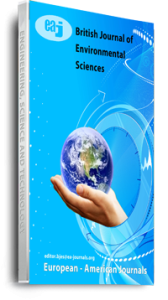This study was carried out to assess the impact of vehicular emission on air pollution at some locations in Ojo Local Government Area of Lagos State, Nigeria, with a view to determining the contribution of motor vehicle emissions to air pollution. The sites were: Iyana Iba Bus-stop, LASU Main Gate, Okokomaiko Bus stop, LASU Second Gate and LASU Main Campus. Some of the air pollutants measured include carbon monoxide (CO), sulphur dioxide (SO2), nitrogen dioxide (NO2), hydrogen sulphide (H2S) and suspended particulate matter (SPM). MSA 5x Multi Gas Detector was used to measure the concentration of air pollutants of CO and H2S while Kanomax Single Gas Detector was used to measure NO2 and SO2 and TSI Aero Trak Handheld Particle Counter Model 9303 was used to determine SPM. Vehicular traffic was observed during the peak traffic periods; 8:00 a.m. – 10:00 a.m. and 4:00 p.m. – 6:00 p.m. each day for eight days. The number of traffic at each site per hour was counted using an electronic counting machine. The results indicated that the concentration of CO at Okokomaiko Bus-stop was the highest with an average of 54.88±7.94 ppm (n=8). At this site, the concentration fell between 41.00 and 65.00 ppm between the hours of 8:00 a.m. and 10:00 a.m. while the average concentration between 4:00 p.m. and 6:00 p.m. was 49.63±10.50. The reason for high concentration of CO at Okokomaiko was due to high vehicular traffic. CO concentration is influenced greatly by traffic flow, in which case the concentration for free – flowing traffic was less compared to an impeded flow due to traffic jam as experienced in most of the locations. The result of the study also showed that hydrogen sulphide profile within the metropolis and control stations was not detected within the equipment’s detection limit. The assessment of the impact of vehicular emissions on the air quality at the study locations showed that traffic density can increase the concentration of air pollutants (NO2 SO2, CO and SPM) emanating from vehicular emissions because pollutants concentrations showed high correlation with traffic density except for H2S. All the pollutants were either within or above the WHO standards for ambient air quality. The study also revealed that measured gaseous pollutants in the air directly or indirectly threaten the environment and life of inhabitants of the locations and that motor vehicles emission and other related activities carried out along these roads remain the main sources of these pollutants.
Keywords: Air Pollution, Concentration, traffic density, vehicular emission

